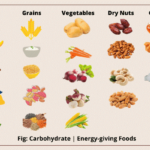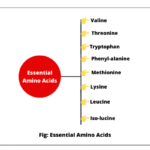Properties of Matter | Physical and Chemical
Properties of matter (or material substances) are simply characteristics by which different kinds of matter may be commonly recognized or identified. These characteristics help us differentiate or identify one substance from another.
For example, a property of water is a liquid, a property of silver is shiny, a property of iron is that it rusts, a property of a pesticide, such as a mosquito repellent, is its obnoxious odor.
Other familiar examples are: a property of sugar is that it tastes sweet, a property of salt is that it dissolves freely in water, and a property of the chlorophyll occurred in green plants is it is green.
Table of Contents
Types of Properties of Matter
In chemistry, we can divide the properties of matter into two categories. They are:
- Physical properties
- Chemical properties

Let’s understand both properties of matter with the help of realtime examples.
Physical Properties of Matter
Physical properties are physical characteristics that can be observed or measured with no chemical change in the structure or composition of the substance under a specific physical state.
In other words, the properties which can be observed or measured without chemical changing in the composition of substance are called physical properties. They are unaffected by chemical composition.
Some examples of physical properties are colour, odor, taste, density, melting point, boiling point, hardness, refractive index, thermal conductivity, electrical conductivity, malleability, ductility, physical appearance, flexibility, freezing point, etc.
Colour, mass, volume, density, boiling point, and melting point are the six main physical properties. We can determine by seeing some physical properties, such as color, sheen, and physical state, or by smelling.
Some physical properties require measurement, and some of these require calculations. For example, mass, volume, melting point, boiling point, and density.
Mass is the quantity of matter present, and it remains always constant. The basic metric unit to measure mass is gram. It is represented by m.
Volume is how much space something taken up. The basic metric unit to measure a volume is liter. We can measure the volume of some objects, such as a block of wood, with the help of mathematical formula (V = length * width * height) if we know length, breadth, and height.
Mathematically, we can measure the volume of other three-dimensional objects, such as spheres and pyramid.
Density (ρ) is a physical property that denotes how a substance is heavy and how much space it occupies (its volume). It is mass per unit volume, and usually expressed in grams per cubic centimeter (g/cm3).
To understand the concept of density clearly, consider two metal blocks of equal size – one made of aluminum and one made of lead. The lead block is much heavier than the aluminum block, instead of having the same volume of both blocks. This is because lead has a greater density, or greater mass, per given volume.
We can calculate density by dividing mass by volume. Mathematically,
density (ρ) = mass / volume
From the above formula, as mass increases in a given volume, density also increases. For example, lead with its heavier mass has a far greater density than the same volume of air. At a certain pressure and temperature, the density of a pure substance is a constant.
In a chemistry laboratory, we can easily measure the weight of a quantity of matter, and to measure volume. So, we can calculate density by dividing the measured weight by the measured volume. With the help of density, we can also determine whether an object will sink or float.
Melting point is the temperature at which a solid substance converts into a liquid (such as 32°F (0°C) for ice to water). Boiling point is the temperature at which a liquid transforms into a gas.
These are physical properties (or characteristics) through which we may identify water through simple observation or measurement.
Chemical Properties of Matter
Chemical properties are characteristics in which a chemical change occurs in the composition of a substance. These chemical changes occur in composition either alone or by interactions with other substances and form new substances having different composition.
In other words, chemical properties are properties which allow substances to chemically react with other substances to form new substances. These chemical changes occur at the atomic or molecular level. For example, a chemical property of iron is that it rusts in the presence of air and moisture.
A chemical property of hydrogen is that when hydrogen combines with oxygen, it forms water. A chemical property of chlorine is that a chlorine combines with sodium to form table salt.
The examples of chemical properties are reactivity of various types, flammability, toxicity, acidity, and heat of combustion (combustibility). Usually chemical reactions are irreversible. For example, when we burn wood, it undergoes chemical change and turns into ashes. We cannot convert ashes back to wood.
Reactivity: It is the tendency of matter to combine chemically with other substances. Certain substances are highly reactive, while others are extremely inactive. For example, potassium is extremely reactive, even in the presence of water.
Flammability: It is the tendency of matter to burn. When a matter burns, it reacts with oxygen and converts into other substances. For example, when we burn wood, it undergoes chemical transform and turns into ashes.
Toxicity: When a chemical element or a combination of chemicals harm an organism, we call it as toxicity.
Acidity: It is the ability of substance to react with an acid. Some metals form compounds on reacting with different acids.
Chemical characteristics are extremely helpful when it comes to distinguish different compounds from each other. On the other hand, we can detect chemical properties when a substance occurs in the process of being changed into another substance.
Intensive and Extensive Physical Properties
The physical properties of matter are extensive or intensive.
(a) Intensive Physical Properties
Intensive properties are those properties which do not depend upon the quantity of matter. That is, they are unaffected by the amount of matter present in any sample. For instance, colour, density, pressure, temperature, melting point, boiling point, refractive index, etc. are intensive properties.
These intensive properties are the same irrespective of the amount of the substance. For example, if we boil 3 liter of water and 5 liter of water, their boiling points will be the same. Chemical properties of matter are also intensive properties.

(b) Extensive Physical Properties
Extensive properties are those properties that depend on the quantity of matter. They are affected by the amount of matter contained in a specified sample. For instance, volume, mass, weight, energy, etc., are the extensive properties of matter.
They directly depend on and vary in value with the amount of the substance. Suppose if we add 3 liter of milk to 5 liter of milk, the volume will increase to 8 liter and the mass will increase as well.
In this tutorial, you have known about properties of matter: physical and chemical with various examples. Hope that you will have understood the basic points of intensive and extensive characteristics.
Thanks for reading!!!






